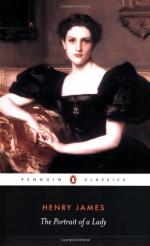|
This section contains 3,007 words (approx. 11 pages at 300 words per page) |

|
SOURCE: "Sexual Realism in 'The Portrait of a Lady': The Divided Sexuality of Isabel Archer," in Studies in the Novel, Vol. XXII, No. 1, Spring, 1990, pp. 19-25.
In the following essay, Hochenauer emphasizes Isabel Archer's sexually passionate and emotionally inhibited sides and the implications of this dual nature in Henry James's novel The Portrait of a Lady.
Isabel Archer's divided sexuality represents a literary paradigm of the struggle for sexual independence among late nineteenth-century women. Throughout The Portrait of a Lady, she remains caught between a stale ideology insisting women de-emphasize their sexuality to gain equal footing with men and a growing, nineteenth-century movement among feminists working to legitimize a woman's sex drive.1 Eventually isolated between what Nancy F. Cott calls "passionlessness ideology" and her own deeply felt sexuality, Isabel cannot be interpreted as the fictional mother of morality or the femme fatale of romantic literature.2 As an ambiguous...
|
This section contains 3,007 words (approx. 11 pages at 300 words per page) |

|


